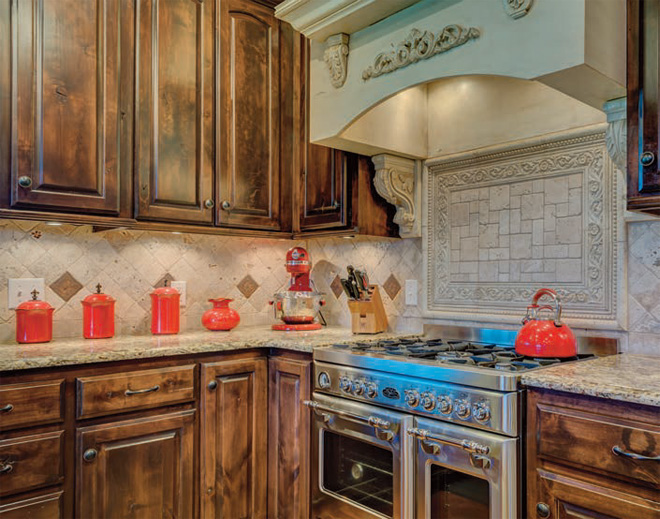
Q: When do you use grain fillers on cabinet jobs? What do you use? And how do you estimate for that?
A: I grain-fill whenever the substrate is a wood species that tends to have an open grain that sits low. The most common wood I fill is oak. If the low grains aren’t properly filled before the top coats are applied, the overall appearance lacks uniformity and tends to be a bit of an eyesore. Plywood is another example of a substrate for which we sometimes have to fill the grain.
Over the years I’ve incorporated Fine Paints of Europe’s brushing putty as a topquality grain filler and I’ve been very happy with the results.
After cleaning all surfaces thoroughly I apply a heavy but even coat of the brushing putty using a disposable brush. Once dry, I sand and then apply a second coat of the putty. I allow 16 hours of dry time.
Next, I sand the puttied surface level with 220 grit papers. I use a palm sander for larger flat areas and hand papers for the details, paying close attention so as not to remove too much material.
My goal when sanding is to knock down the high areas until they sit level with the low areas, creating a true level surface. I then apply an oil primer with either a fine brush and sound technique or (my personal preference) an HVLP sprayer.
I’ll finish with a premium quality top coat using the same method of application as the primer to ensure a uniform appearance.
When grain filling is a necessary step it can add 20-30% more labor, not to mention the extended dry times, increasing the cost of a cabinet finishing project. If the project is a species of wood with an open or distinctive grain that won’t fill with primer and paint, some customers prefer that we make the grain disappear. If grain filling is important to the finished look a customer wants, I don’t hesitate to add 30% to my overall cost to guarantee this process is properly implemented.
– Benjamin Lambert of Lambert Coatings in New Hampshire.
Have a question? Need an expert opinion? APC can help. In each issue we’ll aim to answer a handful of your technical question by reaching out directly to the product experts. Let’s all learn together how to improve the quality of our painting and manage the everevolving range of products coming into the marketplace.
Send your questions to editorial@paintmag.com, subject: From Experience.
APC
Add new comment